
Assignment 9 - Pedal Triangles
Faith Hoyt
First, we need to recall what a pedal triangle is. If we let triangle ABC be any triangle and if P is any point in the plane, then the triangle formed by constructing perpendiculars to the sides of ABC (extended if necessary) locate three points R, S, and T that are the intersections. Triangle RST is the Pedal Triangle for Pedal Point P.

As we can see, our point P gives us a pedal triangle (green) that is outside our original triangle (purple). Note, you can move the point P and get different pedal triangles. You can use this sketch to investigate.
What happens if we position this point P at specific points that we already know exist in a triangle?
First, we'll look at what happens if P is at the centroid of our triangle ABC.
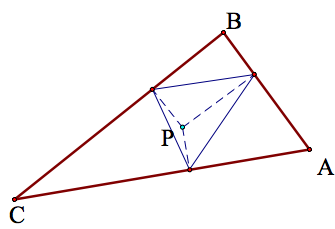
If we move our point P so that it is the centroid of the triangle, we aren't really doing much. If you recall, the pedal point is the point which we use to define the perpendicular lines to each of our sides. Our centroid is the intersection point of our medians of the triangle. Thus all of our perpendicular lines that form the pedal triangle will also go through the midpoints of each of our segments. The one important observation to go along with this finding is that our triangle will always be inside our given triangle. This is true based on a fact about the centroid: it is always located inside the triangle.
To investigate this further, click here.
Incenter?
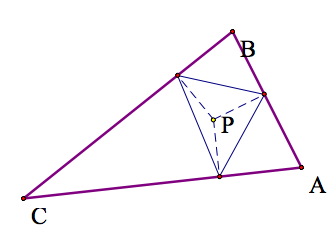
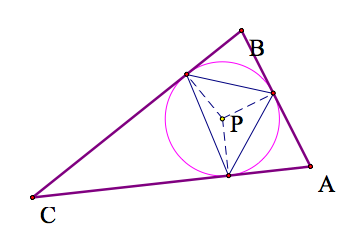
If we move our point P so that it is the incenter of our triangle, again not much changes. We can notice a few properties of an incenter that will make this pedal point unique. First off, to construct an incenter we find the intersection point of the angle bisectors. We also know that the incenter is equidistant from each of our sides. Therefore, when our incenter and pedal point are the same point, we know that our pedal point is equidistant from our sides. We can also see this by using P to construct a circle. In the second picture above, we can see that this is in fact the incircle. In this case as well, not matter what type of triangle we are given, the pedal point and the pedal triangle will always remain inside our given triangle.
To investigate further, click here.
Orthocenter?
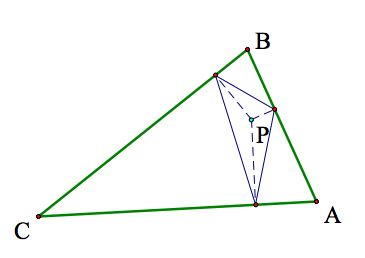
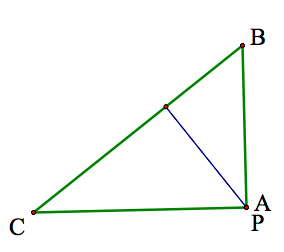

If we move our point P so that it is the orthocenter of the triangle, there are some notable changes. First, we need to realize that we are going to get different points for different types of triangles. As we can see in the pictures above, our new point P changes properties based on the type of triangle. In an acute triangle, it will always be inside our original triangle ABC. For a right triangle, the point P is going to be at the vertex of the right angle. Also, our pedal triangle becomes a straight line. If we have an obtuse triangle, our point P is going to be not only outside our original triangle, but also outside our pedal triangle. Recall, the orthocenter is the intersection point of all of our altitudes, or perpendicular lines to our sides of the triangle. Therefore, it only makes sense that our orthocenter and P could be the same point when we place P at certain points.
To investigate further, click here.
Circumcenter?

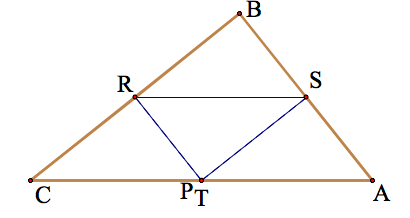
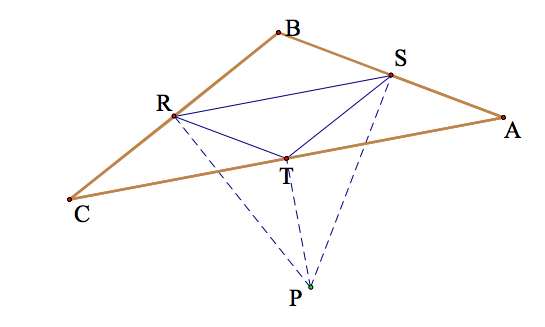
If we move our point P so that it is the circumcenter of our triangle, there once again are some notable changes. We need to realize again that we are going to get different points for our three different types of triangles. As seen in the pictures above, our point P moves according to the type of triangle. For an acute triangle it will always be inside our original triangle. For a right triangle, it is going to lie on the hypotenuse (the side opposite our right angle). Finally, for an obtuse triangle, our point is once again going to lie outside the triangle ABC. An interesting thing to note is that the pedal triangle always remains inside our triangle.
To play around with this sketch, click here.
There is one more important thing to notice here as well. In each case, our pedal triangle will give us four similar triangles. We can prove this:
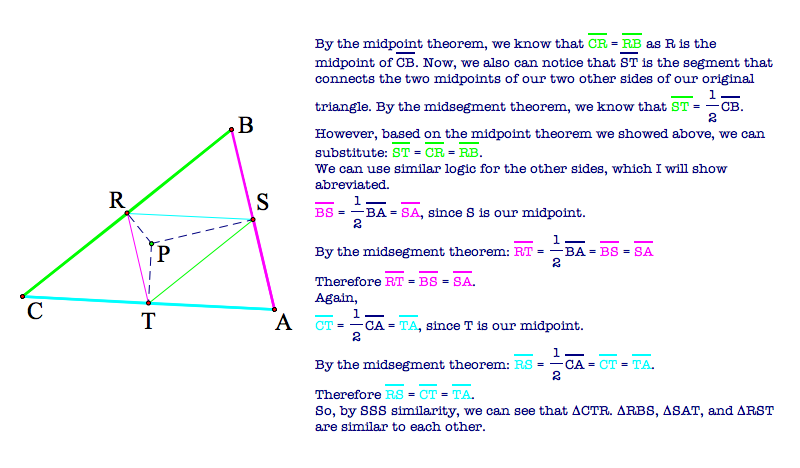
Now that we have looked at the different triangle centers, let's look at something a little more complicated.
First, we want to find the midpoints of the sides of the Pedal Triangle. Construct a circle with center at the circumcenter of triangle ABC such that the radius is larger than the radius of the circumcircle (you can do this by making sure that the circle goes beyond the vertices). Trace the locus of the midpoints of the sides of the Pedal Triangle as the Pedal Point P is animated around the circle you have constructed.
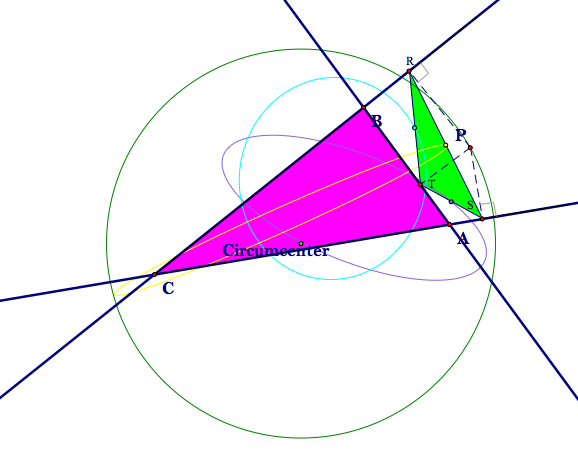
By looking at the picture, we can see that there are three different paths for the three midpoints.
This shows us how, if we pick that specific point P, the midpoints will move around the circle.
If you click HERE you can see the sketch animated (by clicking the animate button) and watch the midpoints as they move around the circle.